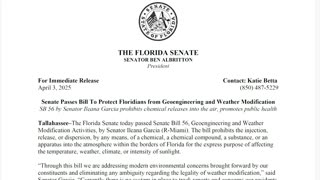Premium Only Content

Viral origins, the stitchup
Entire Wuhan Institute virus database taken offline on 12 September 2019
https://www.europarl.europa.eu/doceo/document/E-9-2022-000608_EN.html
On 12 September 2019 the Wuhan Institute of Virology,
took its entire virus database offline
The renewed publication of this virus database would be an important step towards clarifying the origin of the current ‘corona pandemic’.
WHO abandons plans for crucial second phase of COVID-origins investigation
https://www.nature.com/articles/d41586-023-00283-y
Maria Van Kerkhove, epidemiologist, WHO in Geneva, Switzerland
There is no phase two
Plan for phased studies, that plan has changed
The politics across the world of this really hampered progress on understanding the origins
The World Health Organization (WHO),
has quietly shelved the second phase,
scientific investigation into the origins of the COVID-19 pandemic
Angela Rasmussen, a virologist at the University of Saskatchewan
But without access to China, there is little that the WHO can do to advance the studies
Their hands are really tied
January 2021
Phase one report, March 2021
The presence of SARS-CoV-2 has not been detected through sampling and testing of bats or of wildlife across China.
More than 80 000 wildlife, livestock and poultry samples were collected from 31 provinces in China,
no positive result was identified for SARS-CoV-2 antibody or nucleic acid before and after the SARS-CoV-2 outbreak in China.
The possible 4
direct zoonotic spillover is considered to be a possible-to-likely pathway
introduction through an intermediate host is considered to be a likely to very likely pathway
introduction through cold/ food chain products is considered a possible pathway
introduction through a laboratory incident was considered to be an extremely unlikely pathway
For each of these possible pathways of emergence, the joint team conducted a qualitative risk assessment
The team …. prioritized further studies that would potentially increase knowledge and understanding globally.
Further analysis, will examine
Spatial and temporal correlations and correct for underlying biases in sampling
Assessing wild-animal markets in and around Wuhan
Analysis of trade and history of trade in animals and products in other markets,
particularly in markets epidemiologically linked to early human cases or sequence data
Surveys of susceptible animals in farms in South-East Asia (for viruses related to SARS-CoV-2)
Widespread livestock testing
Widespread testing wildlife samples for SARS-CoV-2 related viral sequence and antibodies
Audits of labs in the area
Convene a global expert group to support future joint traceability research on the origin of epidemics.
Present day
Zhao Lijian, China’s foreign ministry
the second phase should not focus on pathways the mission report had already deemed extremely unlikely
Researchers are undertaking some work
Efforts to trap bats in regions bordering China
Testing of archived wastewater and blood samples
Gerald Keusch, National Emerging Infectious Diseases Laboratory Institute, Boston University
The origins investigation was poorly handled by the global community.
It was poorly handled by China.
It was poorly handled by the WHO
The WHO should have been relentless in creating a positive working relationship with the Chinese authorities,
if it was being stonewalled, it should have been honest about that.
Thea Fischer, a public-health virologist at the University of Copenhagen
(initial team member)
I still hope that progress will be made
-
 15:17
15:17
Dr. John Campbell
22 days agoFlorida bans chemtrails
14.4K75 -
 LIVE
LIVE
Bitcoin Magazine
1 day agoThe Bitcoin Conference 2025 | Day 1 Livestream
5,097 watching -
 LIVE
LIVE
BonginoReport
1 hour agoAnti-Trump Lawyer FIGHTS for Illegals to Vote in WY - Nightly Scroll w/ Hayley Caronia (Ep.56)
3,817 watching -
 16:23
16:23
Michael Franzese
1 hour agoWhy You’ll Never Hear Michael Franzese Talk About Mob Murders
5.71K3 -
 1:37:28
1:37:28
vivafrei
5 hours agoBitcoin Conference in Vegas! Peter Hotez is a Hack Quack! Liverpool Attack Updates & MORE!
72.1K16 -

Ark of Grace Ministries
4 hours agoProphetic Warning: AI and the Battle Over America
15.1K2 -
 1:14:06
1:14:06
Dr. Drew
4 hours agoWhose Biolab Made COVID-19: China's Wuhan or USA's UNC Chapel Hill? Dr. Li-Meng Yan Debates Dr. Clayton Baker – Ask Dr. Drew
4.75K2 -
 54:40
54:40
Grant Stinchfield
1 hour agoBlind Liberal Zombies and The Reparation's Racket
7.15K2 -
 51:10
51:10
Kitco NEWS
1 day agoDollar Destruction: Will It End in Depression, Collapse or Civil War? | Tom DiLorenzo
5.68K2 -
 LIVE
LIVE
Wayne Allyn Root | The Root Reaction
5 hours agoThe Root Reaction LIVE | 27 May 2025
85 watching